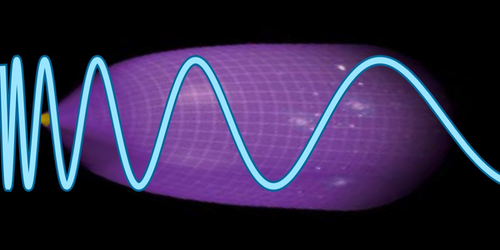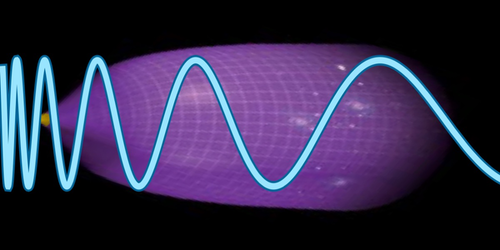Inflation Goes Up Against the Clock
The Universe might have started with a bang or it may have commenced with a bounce. But these different scenarios are difficult to distinguish in cosmological data. Now Xingang Chen from the Harvard-Smithsonian Center for Astrophysics, Cambridge, and his colleagues suggest a solution to this problem in the form of “clock signals,” wiggle-like features that might show up in the distribution of matter and energy on cosmic distance scales. These signals originate from oscillations in matter waves that filled the primordial Universe, and their exact form depends on how the Universe began. Thus the researchers suggest that clock signals could provide a rare test for the most popular cosmogenic model, called inflation.
Current understanding of the earliest cosmic epochs is largely based on the observed density fluctuations in the cosmic microwave background and in galaxies. Data suggest that the amount of fluctuations in the early Universe—as represented by the “primordial power spectrum”—is roughly constant over a wide range of different length scales. This smooth spectrum is also a key prediction of inflation, which assumes an era of exponential expansion. However, theorists have shown that inflation is very “flexible”—it can predict a wide variety of different shapes for the power spectrum. So, how to test inflation?
Clock signals could provide such a test, say Chen and colleagues. Their calculations show that inflation produces a unique clock signal in the form of wiggles in the power spectrum. Alternative theories of the Universe’s beginning—like bounce models that assume the Universe contracted before expanding—produce entirely different wiggle patterns. Searching for these patterns will require detailed observations from future instruments like the Large Synoptic Survey Telescope. But hints of clock signals, the researchers argue, may have already been detected in certain anomalous features of the power spectrum.
This research is published in Physical Review Letters.
–Michael Schirber
Michael Schirber is a Corresponding Editor for Physics based in Lyon, France.





